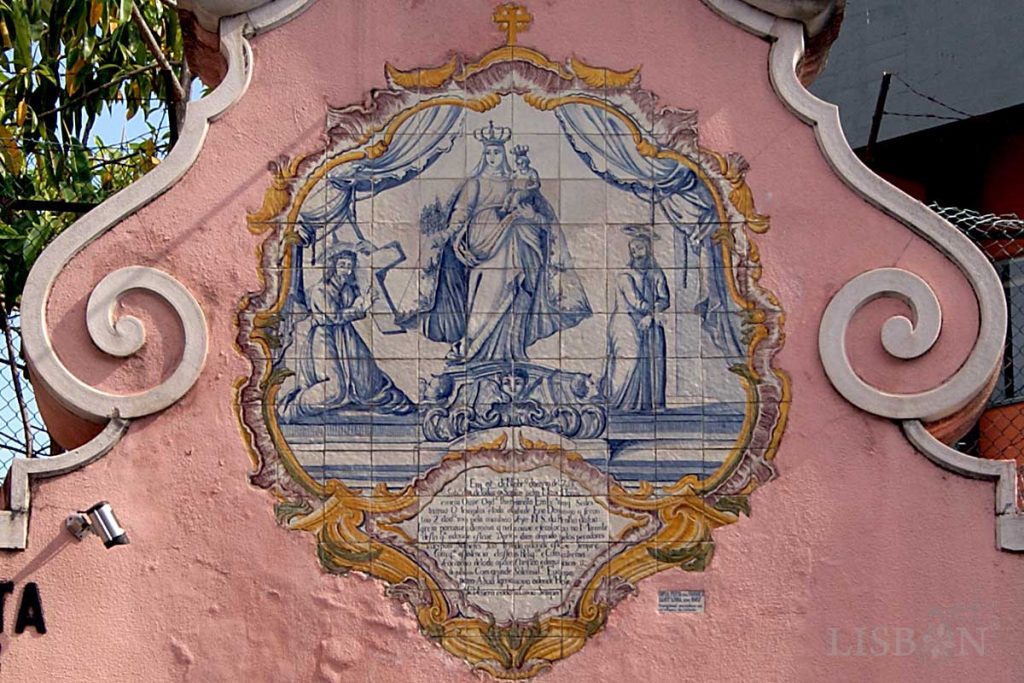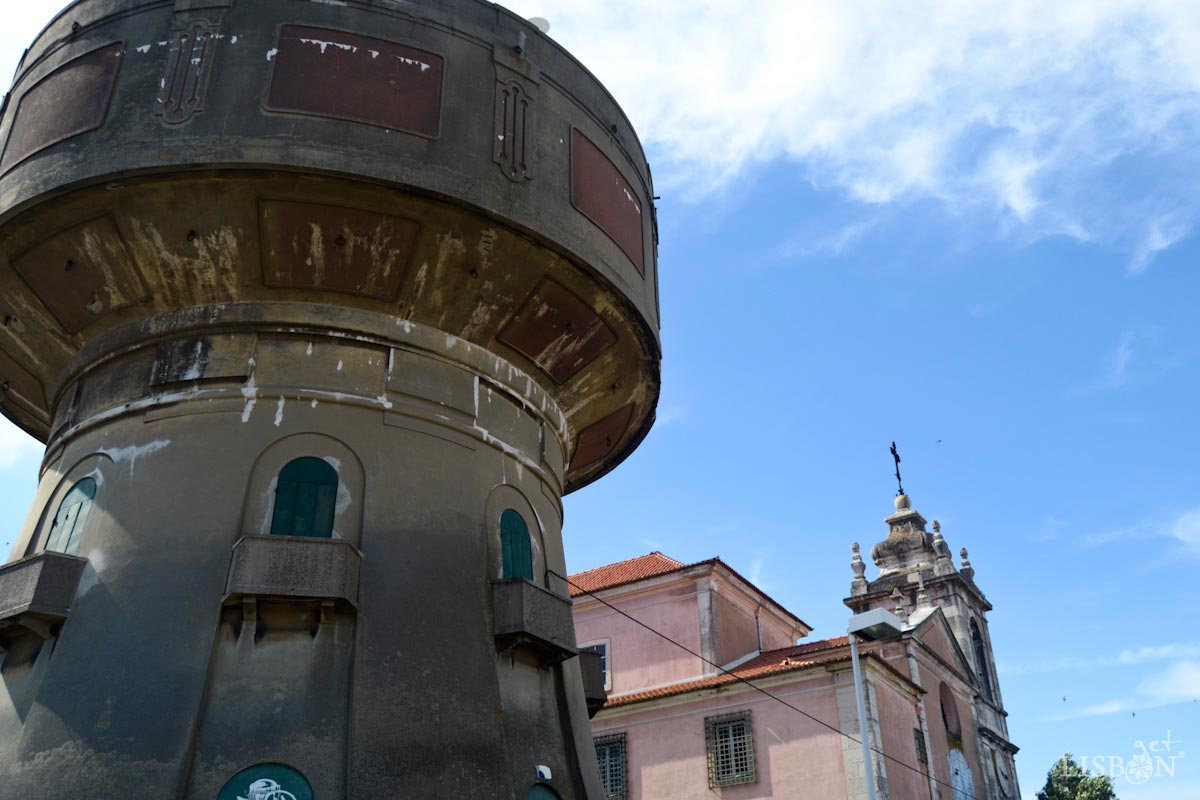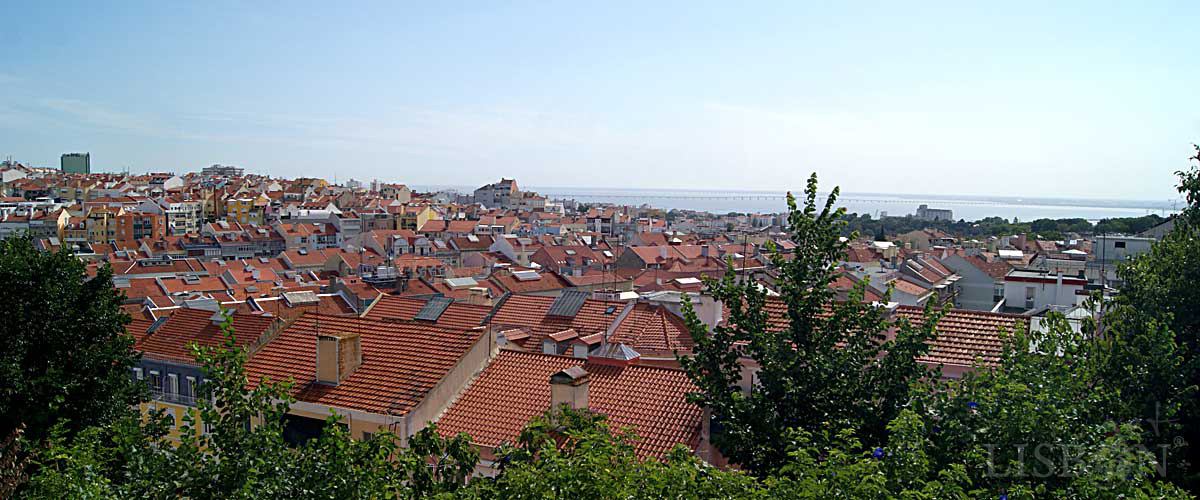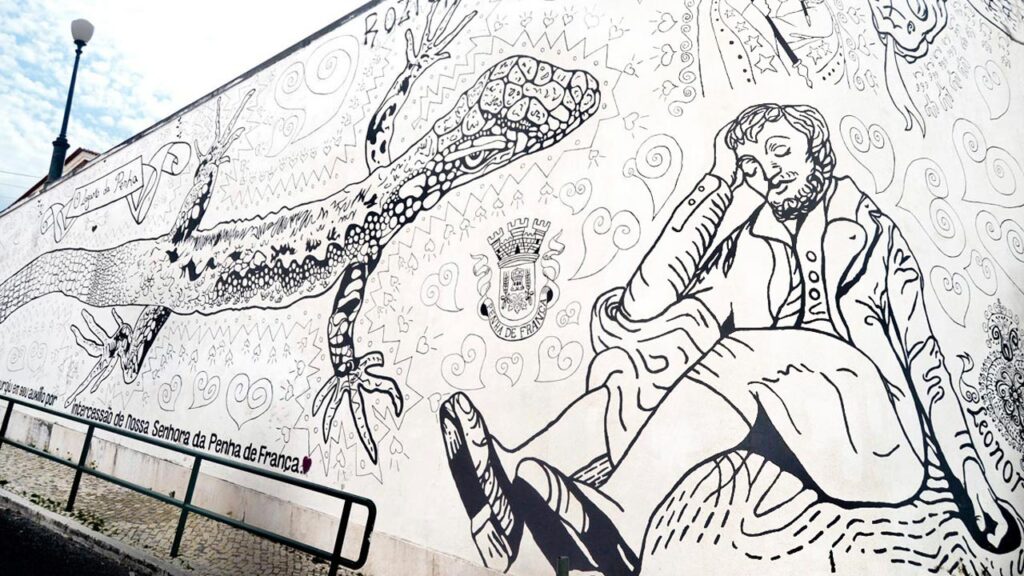We’ve created a short itinerary with suggestions so that you can better enjoy the Viewpoints of Penha de França and of Monte Agudo.
In Lisbon there are many viewpoints due to its natural uneven terrain that resulted in the well-known designation of City of Seven Hills.
The national and foreign tourists should not miss the most emblematic viewpoints, such as the one of Portas do Sol, which has a view over Alfama, the two of Graça and of São Pedro de Alcântara.
But there are others that are equally worth a visit. The Viewpoints of Penha de França and of Monte Agudo are two magnificent observation points of the city, but that go unnoticed even by the people of Lisbon. The distance between these two is only 1km.
We’re going to visit the Church of Nossa Senhora da Penha de França, observe an old water tank and appreciate a tile panel made by Querubim Lapa.
We start our route in Travessa do Calado in front of the Parish Council of Penha de França.
Get to know Lisbon’s historic neighbourhoods in a guided tour and discover unmissable places of this magnificent city.
Tilework Panel in the Parish Council Building

It was in this small palace that, during the rebuilding of the Church of Penha de França, the original image of Our Lady that resisted the earthquake of 1755 was kept. This fact was documented in a magnificent polychromatic tilework panel, with an inscription, that we can observe above the door.
This is a reproduction produced by the Santana Factory in 1987 that replaces the original that is protected in the Museum of Lisbon, but that is still worth seeing.


The Origin and Legend of Penha de França

When entering the Penha de França Square, we find ourselves in the place where in 1597 a small church was built.
António Simões, a sculptor of images imprisoned in Alcácer Quibir, promised to the Virgin the execution of images praising her if he was saved of captivity. The miracle was conceded, and the promise was kept! One of the images he reproduced was dedicated to Senhora da Penha de França, a cult with origin in Salamanca, which found a home in this church.
Before we arrive to the church, we come upon a large painted mural that reminds us of the curious legend related to Senhora da Penha de França:
One day a sleeping pilgrim on the mountainside was awakened by a huge lizard before being attacked by a snake who, surprised, turned away. Devotee of Senhora da Penha, the man considered that it would be a miracle and thus, the tradition of the Lizard of Penha appeared.
This episode is still present in a large polychromatic tile panel that exists on the outside of the apse of the church. Its location doesn’t allow a great observation of this panel, but it is still worth a look.
Also in a room adjoining the church, a lizard and a snake carved in wood remind us of the legend.
The Church of Nossa Senhora da Penha de França
In the 17th century, a new construction, a church and a convent, took the place of the small church.
Today, we can see the result of the rebuilding concluded in 1785 after the dreadful earthquake that damaged the buildings, and of some restauration initiatives of the 20th century.
Let us then visit this amazing building.
The façade of the church is divided into three parts separated by two buttresses, in a mix of Mannerism and Baroque. However, it’s the interior that surprises us. We can access it via a monumental staircase, but we note that for people with reduced mobility, the access is made via a side entrance.

We’re then faced with a church with an octagonal plan, in which its main chapel is where the original image of Senhora da Penha de França made by António Simões is.
All of its interior is monumental! The walls in coloured limestone alternate with wooden altars painted to fake stones.
We highlight the paintings made by Vieira Portuense (1765-1805) and two big statues of São Pedro and São Paulo in niches of the main chapel created by Machado de Castro (1731-1822).
The church also has spaces with tiles of the 17th and 18th centuries that remind us that this was a house of the Order of Saint Augustine.
The whole set of buildings and mobile assets was in November 2017 classified as a Monument of Public Interest.
After knowing a bit about the Church of Penha de França and before proceeding to the viewpoint, we observe the water tank that stands out in the landscape.
Water Tank of Penha de França

In the rear zone of the church is the deactivated high tank of Penha de França, built between 1929 and 1932. This water deposit was part of the hydraulic infrastructure that used the cistern of the convent of Penha de França to supply water to the high points of the neighbourhood.
Let’s now discover the Viewpoints of Penha de França and of Monte Agudo.
Viewpoint of Penha de França

By going around the church and going though Rua Marques da Silva, we arrive to the viewpoint. Here we have an incredibly wide panorama. We can see from the eastern zone of Lisbon, with the Vasco da Gama Bridge in the background to the western zone, with the Monsanto Forest Park and the Amoreiras as part of the landscape. In days of clear sky it is possible to observe the Palmela Mountains and the Sintra Mountains, in opposite directions.

After being dazzled, we go back to Penha de França Square towards Rua Penha de França. We walk 5 minutes and arrive to the Secondary School Dona Luísa de Gusmão.
Tile Panel by Querubim Lapa

We make a quick stop to observe the tile panel by the artist Querubim Lapa (1925-2016), recognized above all as one of the most important Portuguese potters, standing out in the plastic solutions and innovative techniques.
There are numerous panels of this artist spread throughout the city of Lisbon. This one with about 30 meters of length dates from 2005 and, although recent, has gaps, a state that powers its disaggregation and makes it urgent to have an intervention.
After the school, we arrive to the beginning of Rua Heliodoro Salgado. Here is the entrance of the Viewpoint of Monte Agudo.
| Never miss another article | Subscribe here |
Viewpoint of Monte Agudo

An extraordinary viewpoint, one of the lesser-known of Lisbon, where we can catch sight of a panorama of the famous Viewpoint of Senhora do Monte, of the south bank of the Tagus River, Santana Hill and the entire north zone of Avenidas Novas.
This place deserves a long break to contemplate the silence and the wonderful view. At the kiosk it is possible to have a drink or if it is mealtime, to ask for a toast to enjoy this moment.

Also read Tiled Panoramas of Lisbon by Fred Kradolfer where the tile panel of Monte Agudo is included.
At the end, the exit can be made by the pedestrian walkway, through stairs, that has connection to Rua Ilha do Príncipe. From here to Avenida Almirante Reis is only a short distance.
We hope you enjoyed it and that you accept the invitation to take a stroll through this small but rich itinerary to get to know the Viewpoints of Penha de França and of Monte Agudo. 🙂
The project getLISBON has been very rewarding and we want to continue revealing the singularities of fascinating Lisbon.
Help us keep this project alive!
By using these links to make your reservations you’ll be supporting us. With no extra costs!
• Looking for a different experience? We can create a customised itinerary based on your interests. Contact us!
• Or if you prefer tours and other activities in various destinations, take a look at GetYourGuide.
• Save time and money with a flexible Lisbon Card!




